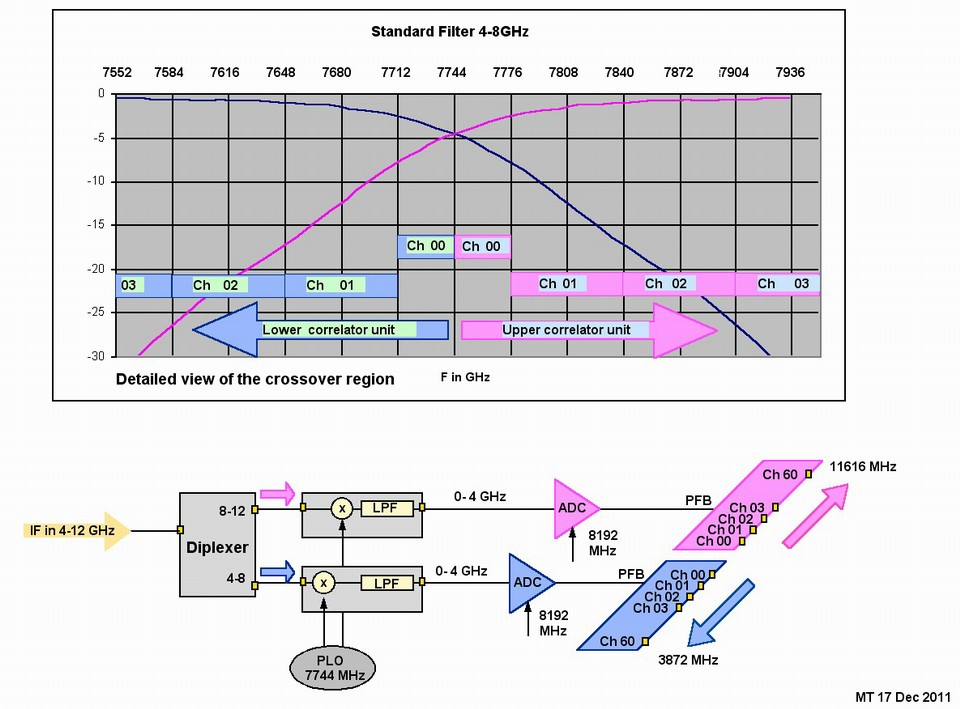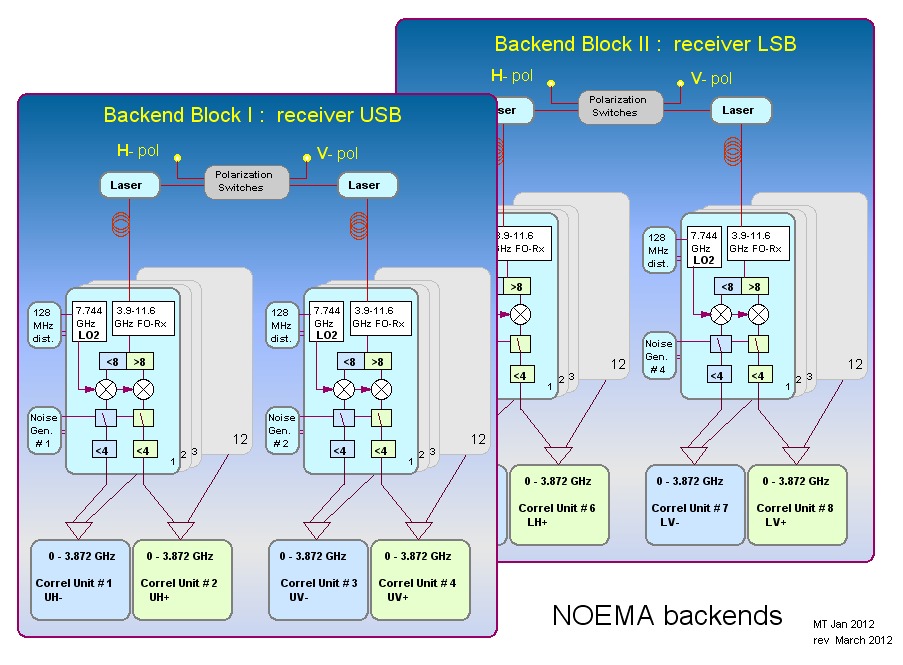Frequency issues for the NOEMA backends
M.Torres, March 2012
The NOEMA receivers deliver simultaneous Upper and Lower sidebands, each of them being in the 4 to 12 GHz range. By interleaving them, a continuous frequency coverage can be achieved with a minimum number of receiver settings.
1.First conversion
1/ Simple arithmetics show that the U and L bands can be interleaved with perfect stitching when the extreme frequencies of the IF are in a 3:1 ratio.
2.Second Conversion
Example : Four receiver settings can cover a band of 64 GHz
Actually the frequencies of IF boundaries to consider are those effectively analyzed by the correlator. The theoretical bandwidth of the correlator is two times 4.096GHz, but an antialiasing filter must be inserted which reduces it by ~5% . The PolyFix correlator is organized in primary channels 64 MHz wide, so it is convenient to truncate the band at a primary channel boundary. This leads to an effective width equal to 7.744 GHz. Reporting to the picture above, a band of 61.952 GHz can be explored in four phases.
When the phases are performed at different periods, the Doppler effect somehow perturbates the stitching. At 6 month intervals, gaps or overlaps of several tens of MHz may show up. For this reason the correlator clock is varied by a small amount in order to shrink/stretch the channelization grid according to the radial velocity of the observatory. This technique is called barycentric referencing .
The correlator operates in the first Nyquist window. Two correlator units are used to cover the whole IF , which is actually 3.872 to 11.616 GHz. The IF is split in upper and lower halves via filters and downconverted to basebands by a phase-locked oscillator at 7.744 GHz. This scheme causes some aliasing in the crossover region, but is advantageous in terms of spurious line generation and platforming. The figure below shows how the lower primary channels of each correlator unit are affected.
The polyphase filter bank (PFB) slices the baseband into 64 primary channels, each 64MHz wide, except for channel 0 which is 32 MHz only. Channels above 60 are not processed by the correlator because they are in the skirt of the antialiasing filter. In baseband space the upper edge of channel 60 is (60x64)+32=3872MHz. In IF space this gives 7744+3872=11616 MHz for the upper unit and 7744-3872=3872 MHz for the lower unit.
General block diagram for the analog processing (click to enlarge)


